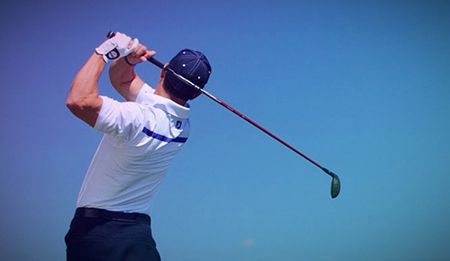|
By: Dr. Greg Rose
Titlest Performance Institute
Lower back pain is by far the most common ailment suffered by golfers of all ages. Based on data collected at TPI from over 31,000 golfers, 28.1% of all players deal with lower back pain after every round. Lower back pain is also the most common complaint seen amongst professional golfers on all tours (data suggest over 23% play with lower back pain). To understand the cause of lower back pain, it requires a thorough investigation of what I call the “Body-Swing Connection”. Let’s take a closer look.

First of all, let me start by making a bold statement. The lower back is rarely the original cause of the pain! It may be the current source of the pain, but it’s rarely the cause of the pain. More often than not, abnormal motions or forces coming from adjacent or distant areas of the body force the lower back to do excessive work until it completely breaks down itself. In other words, the lumbar spine is usually the area that is being unnecessarily overworked to the point of injury. It is basically the over-used and over-abused worker who just goes and goes until he or she breaks.
In my experience, the lack of mobility seen in the ankles, hips, thoracic spine and shoulders of many golfers forces the lower back to carry all of these excessive loads and is the primary cause for most back injuries. So any article about lower back pain should address those areas specifically.
When the lower back finally does break down, you can typically expect one of the following conditions to occur:
1 - Muscle Strain or Ligamentous Sprain
|
A muscle strain or “pulled muscle” as well as an injured ligament will usually resolve itself in 2-4 weeks with plain old rest and recovery. However, there can be some residual muscle stiffness, fascial restrictions, joint fixations or movement alterations that may need to be addressed afterwards. Sprains or strains are the most common form of lower back injury we see. Symptoms may range from a minor ache to a sharp debilitating pain. Most sprains and strains are localized in the lower back region, meaning pain does not radiate into the butt or leg. The chemical inflammation around the injury is usually sore to the touch and the pain usually subsides with rest.
The lumbar intervertebral disc acts as a spacer between adjacent vertebrae to help absorb compressive forces and create space for the spinal nerves to exit the spinal column. Imagine the disc as a jelly filled donut. If excessive or abnormal stressors are placed on the disc, tears can occur. When this happens, the force of the jelly against that tear can cause a bulge in a portion of the donut leading to a “bulged disc.” In more severe cases, the jelly can actually exit through the donut wall leading to a “ruptured disc.” The discs are also susceptible to degenerative changes over time. To continue the analogy, imagine the jelly inside of the donut drying up. Any of these disc problems can leave the spinal nerves vulnerable to irritation or compression resulting in dysfunction and pain. Most disc pathologies create radiating pain into the buttocks or the leg
(think sciatica) due to the irritation of spinal nerves. Sitting for prolonged periods of time, bending forward into a slouched position, or lifting heavy objects can all exacerbate disc symptoms.
3 - Altered Joint Mechanics or Motor Control
|
Interestingly, the brain can completely change the lumbar spine’s ability to move just by changing which muscles are firing or by altering the sequence of when muscles fire. This can occur in the absence of any visible injury. These altered motor control or joint mechanics can begin as a protective mechanism, but can lead to chronic problems over time. Most experts believe over 80% of all chronic lower back problems begin this way.
4 - Degenerative Arthritis
|
Just like all joints, with over-use, abuse, or even lack of use, spinal joints can become arthritic. Bone spurs and osteophytes act like stalactites and stalagmites inside a cave closing in on the opening for the spinal nerves. With time, these bony outgrowths can fuse joints, irritate nerves and create general inflammation in the area. Stenosis, the narrowing of the canal or cave that houses the spinal nerves is a very common problem with arthritic changes. Most arthritic problems in the spine create sharp pain with certain movements. The resulting inflammation can then cause chronic dull pain over time.
Stress fractures and pedicle fractures (spondylolysis) are common problems seen in the lumbar spines of rotational athletes. This occurs due to the rapid extension and rotation of the spine, causing adjacent vertebrae to collide into each other at their end range of motion. This action places high forces on the posterior portions of the vertebrae and can lead to these types of fractures. Injuries of this sort can lead to deep dull pain and instability in the spine.
So the big questions are:
-
How do I prevent the lower back from getting injured?
-
How do I treat the injury once it occurs?
Let’s start by talking about prevention. The best way to prevent lower back injuries in golf is to attack the problem head on with three main offensives:
-
Normalize Movement Patterns
-
Optimize Swing Mechanics
-
Incorporate Recovery Techniques
To find out the answers to the questions above, and to learn about the three main offensives to best prevent lower back injuries, click to read more on:
THE GOLFER'S GUIDE TO LOWER BACK PAIN
|

